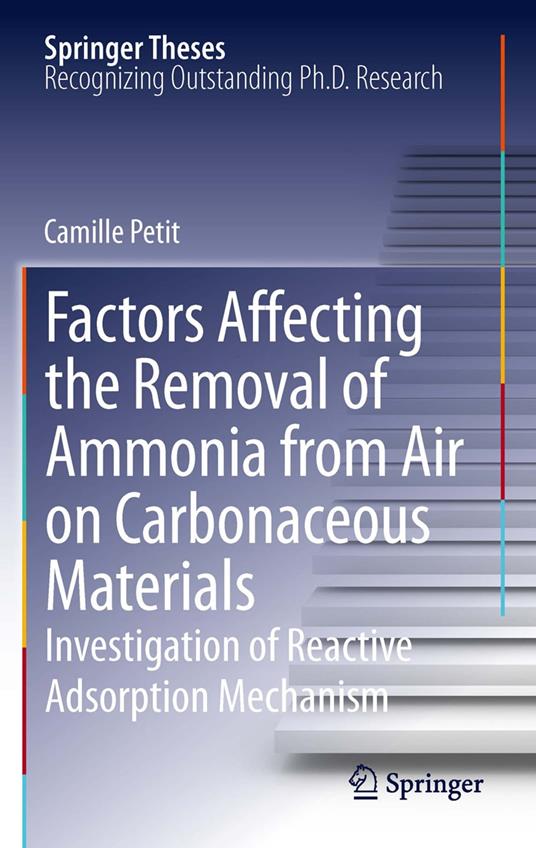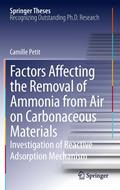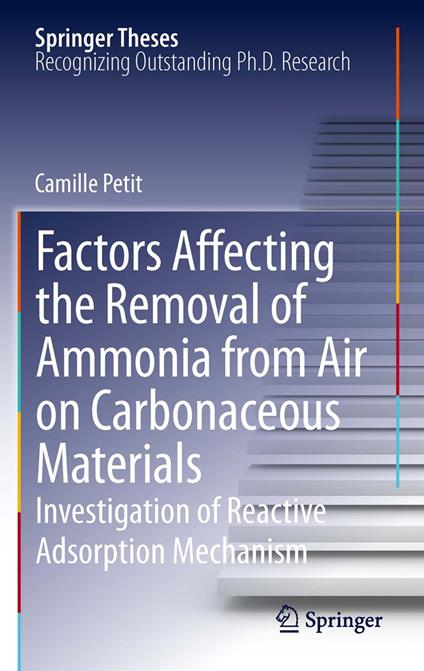Factors Affecting the Removal of Ammonia from Air on Carbonaceous Materials
Air pollution related to the release of industrial toxic gases, represents one of the main concerns of our modern world owing to its detrimental effect on the environment. To tackle this growing issue, efficient ways to reduce/control the release of pollutants are required. Adsorption of gases on porous materials appears as a potential solution. However, the physisorption of small molecules of gases such as ammonia is limited at ambient conditions. For their removal, adsorbents providing strong adsorption forces must be used/developed. In this study, new carbon-based materials are prepared and tested for ammonia adsorption at ambient conditions. Characterization of the adsorbents’ texture and surface chemistry is performed before and after exposure to ammonia to identify the features responsible for high adsorption capacity and for controlling the mechanisms of retention. The characterization techniques include: nitrogen adsorption, thermal analysis, potentiometric titration, FT-IR spectroscopy, X-ray diffraction, Energy Dispersive X-ray spectroscopy, X-ray photoelectron spectroscopy and Electron Microscopy. The results obtained indicate that ammonia removal is governed by the adsorbent’s surface chemistry. On the contrary, porosity (and thus physisorption) plays a secondary role in this process, unless strong dispersive forces are provided by the adsorbent. The surface chemistry features responsible for the enhanced ammonia adsorption include the presence of oxygen-(carboxyl, hydroxyl, epoxy) and sulfur- (sulfonic) containing groups. Metallic species improve the breakthrough capacity as well as they lead to the formation of Lewis acid-base interactions, hydrogen-bonding or complexation. In addition to the latter three mechanisms, ammonia is retained on the adsorbent surface via Brønsted acid-base interactions or via specific reactions with the adsorbent’s functionalities leading to the incorporation of ammonia intothe adsorbent’s matrix. Another mechanism involves dissolution of ammonia in water when moisture is present in the system. Even though this process increases the breakthrough capacity of a material, it provides rather weak retention forces since ammonia dissolved in water is easily desorbed from the adsorbent’s surface.
-
Autore:
-
Anno edizione:2016
-
Editore:
-
Formato:
-
Lingua:Inglese
Formato:
Gli eBook venduti da Feltrinelli.it sono in formato ePub e possono essere protetti da Adobe DRM. In caso di download di un file protetto da DRM si otterrà un file in formato .acs, (Adobe Content Server Message), che dovrà essere aperto tramite Adobe Digital Editions e autorizzato tramite un account Adobe, prima di poter essere letto su pc o trasferito su dispositivi compatibili.
Cloud:
Gli eBook venduti da Feltrinelli.it sono sincronizzati automaticamente su tutti i client di lettura Kobo successivamente all’acquisto. Grazie al Cloud Kobo i progressi di lettura, le note, le evidenziazioni vengono salvati e sincronizzati automaticamente su tutti i dispositivi e le APP di lettura Kobo utilizzati per la lettura.
Clicca qui per sapere come scaricare gli ebook utilizzando un pc con sistema operativo Windows



